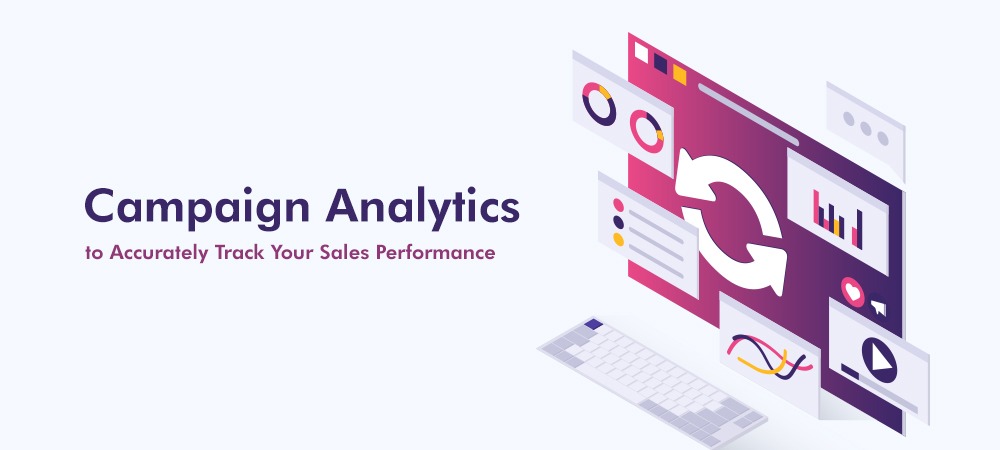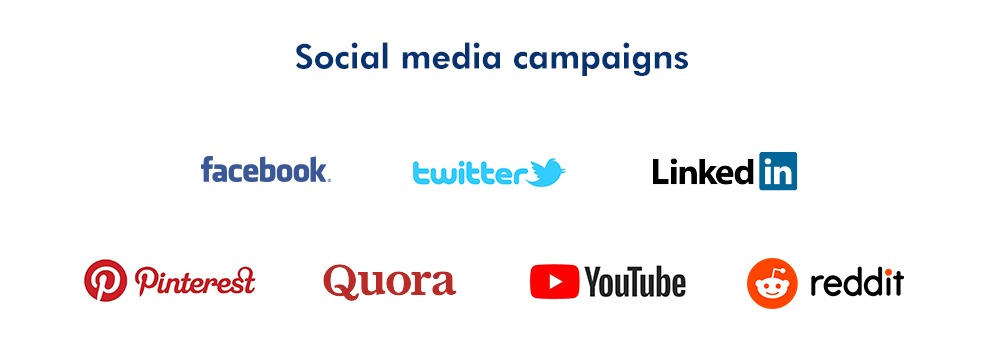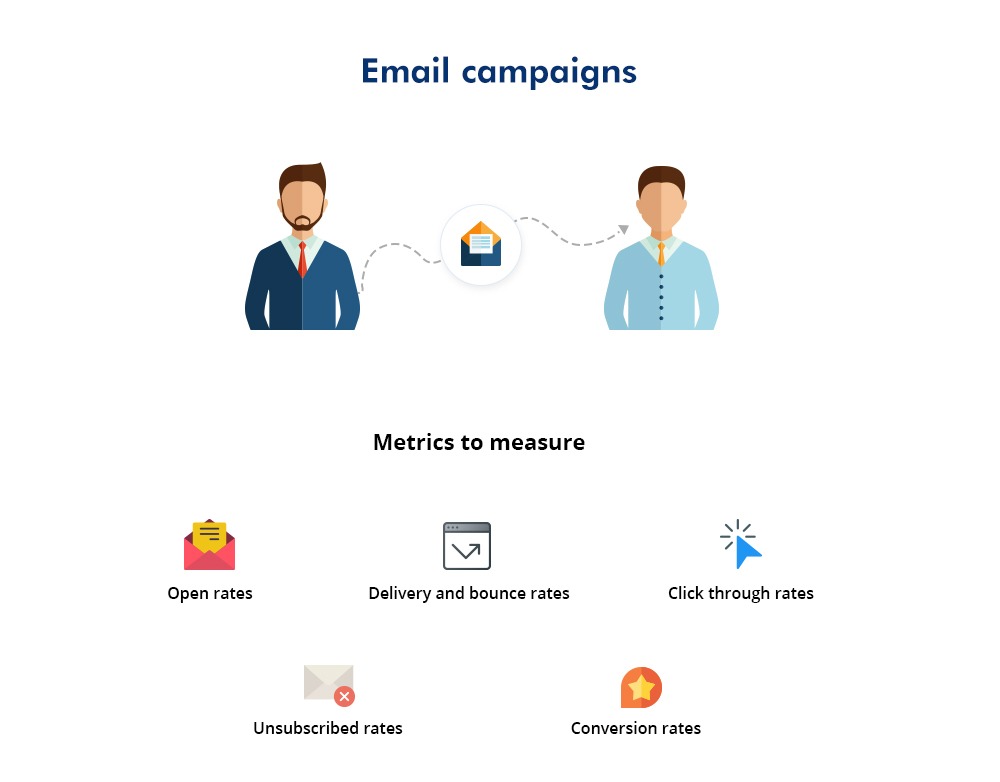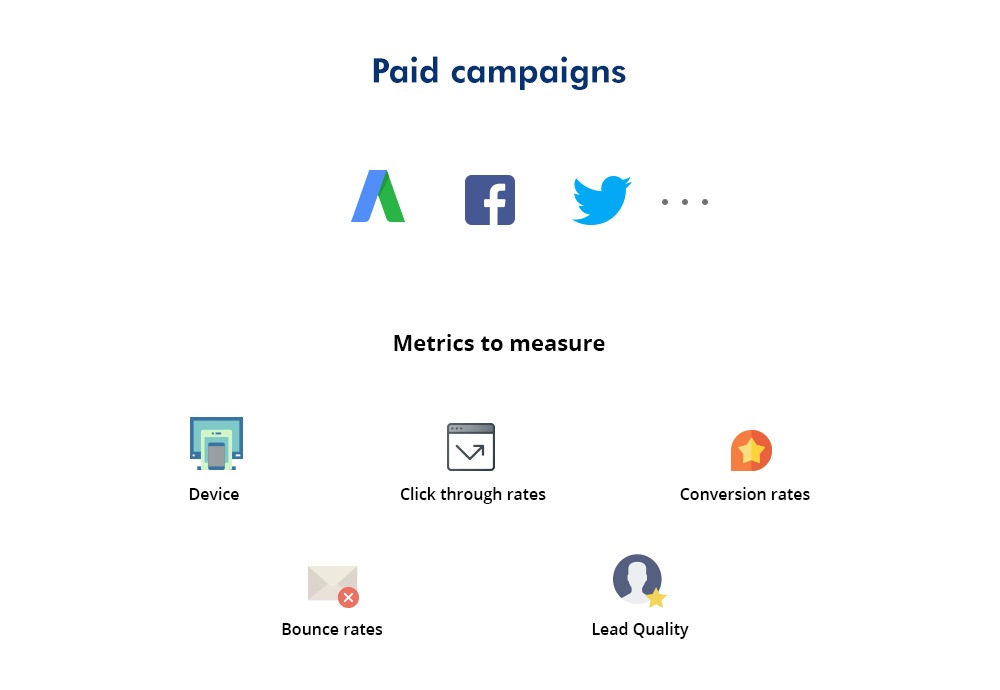Marketers are faced with the burden of bringing in good and high-quality leads for the business. This could include both short term as well as long term goals. But how do they achieve these goals? By running various campaigns, of course. This also means that they have to measure if their efforts are worth it. And that is where campaign analytics come in.

It affects a marketer’s decision on where to invest marketing funds and what strategy he needs to adapt for the future. It is also great at boosting the effectiveness and quality of the business. And, instead of putting all their eggs in the wrong basket, marketers will know where to invest and why.
What are campaign analytics?
Campaign analytics is the data pertaining to the results of marketing campaigns. Marketing may be running promotional campaigns via email or even through social media. In order to measure the ROI of these marketing efforts, it is necessary to analyze and test various parameters.
Different campaigns created by businesses
You may think that creating a business campaign is as difficult as moving a mountain. But, in reality, it is not. Though it may seem complicated and time-consuming, a well planned out marketing campaign can significantly boost your revenue.
Usually, marketing campaigns are designed to target and reach a very specific set of audiences. You need to identify the goal of the campaign before setting one. The more precise your goals, the more success you can enjoy. There are various types of campaigns that marketers set. But, let us take a look at the three big one:
- Social media
- Email campaigns
- Paid campaigns
Social media campaign
Social media is a great way to reach your audience. As of 2018, there are 3.196 active social media users (Source). This is a huge market right there. And, marketers are fast adopting this as a platform to raise brand awareness. To do this right, you have to first perform a social media audit.

A social media audit lets you know how popular your social presence is. Once you know this, then you can focus on what you need to do to build it or expand your audience further. You can then start building a social media marketing strategy. How do you build this?
- Know your audience: Identify your target users. Know where they are most likely to spend their time and be on it. Is your ideal audience, at home mothers between the ages of 30-50? Chances are they use a lot of Pinterest.
- Understand the mode of communication: You know where your audience is. Now figure out what to tell them and how. Do you think a very detailed image would do the trick? Or maybe a nice long article? Or perhaps, a video is the way to go.
- Find out when to send the message: Now, you need to know when your audience is mostly active. Imagine sending messaged at 3 am to an audience that largely falls asleep at 11 pm.
- Curate your content: Don’t just send random messages on a whim. Do your research and send them a mix of various content. Test and keep testing, to know what works best.
Email campaigns
Email is perhaps the most effective method in which you can get your marketing message across. The best part is that it is highly measurable, easy to create and doesn’t burn a hole in your pocket. Similar to social media campaigns, email campaigns also need to be well planned.

Spamming someone’s inbox, just for the heck of it, is not going to win you any points. Rather, irritated leads may just unsubscribe. So, remember to make your message clear and concise and plan your campaigns in advance.
But, how do you know if your campaigns are working?
Metrics to Measure:
The open rate: This shows the number of emails that were opened out of the total number of emails that were sent for the campaign. The most beneficial open statistic is the unique open because it entails the number of people that have opened the sent emails more than once.
Delivery and bounce rate: This refers to how many emails were delivered and how many bounced, that is, undelivered.
Click through rate: Click through rate refers to or shows who is interested enough to read your emails and also to click on the website to gain more information. When the click-through rates of your company increases then it leads to higher conversion rates.
Unsubscribed rates: Unsubscribed rates are the result received from how many opt out of receiving emails from you. It is important because it allows businesses to quickly know something is wrong. They can then take measures to find out why, and how to fix it.
Conversion rates: Marketers or businesses use this data to measure if the important message was related to the target audience.
Paid Campaigns
Paid search campaigns can give your business a great boost and gives you an advantage over your competition. With paid campaigns, businesses can advertise over different platforms and search engines like Google. Search engine users type relevant keywords, and then your business advert comes up.

Although paid ad platforms do charge a fee, there are more benefits to be gained. Most PPC platforms allow you to selectively choose an audience. This allows you to ensure that only relevant people see your ad. Here are some benefits to paid campaigns.
- It produces a faster result without a lot of time and effort spent.
- It helps in bringing more customers and leads to your website.
- It provides better leads.
- It boosts brand awareness.
Metrics to Measure:
Device: You can measure the performance of your paid campaigns by the device you run it on. Some ads perform better on desktops, while some work better on mobile devices. This actually helps you determine which one to focus on
Click through rates: This is calculated by dividing the number of clicks by the total number of impressions made multiplied by 100%. A higher CTR means, more people are clicking on your ad and that your ad is relevant to your audience.
Conversion rates: This is the math that tells you how well your business is performing. To calculate- the number of conversions divided by the total number of clicks multiplied by 100.
Bounce rates: You can measure your bounce rate using your Google Analytics tool. A bounce is when a user clicks an advert but does not do anything. This will tell you that maybe you need to make your ad a tad more interesting.
Lead Quality: This is an underrated but very important metric. The quality of the lead tells you if it’s worth running the ad or not. If your ad gives you poor leads who are not interested, it’s all a waste.








